Some Civil War Reflections during a Spring Sunrise in Washington D.C.
Come for a sunrise stroll through Washington D.C. and let’s find some Civil War history and legacy to observe and consider…
We’ll start at the Smithsonian Castle, on the south side of the structure.
The famous Smithsonian Castle stood during the Civil War years. Completed in 1855, it housed museum collections and was a popular place to visit! Tragically, part of an upper floor of the building caught fire in 1865, destroying valuable collections of art, papers, and the contents of libraries from Alexandria, Virginia and Beaufort, South Carolina, which had been captured and “preserved” by Union troops during the war.
Continuing west, we get a lovely view of the Washington Monument. The cherry blossoms are still here this morning. Their peak bloom has passed, but the soft pink and white is still gorgeous in the early morning light.
During the Civil War years, the Washington Monument was a bit of an eye-sore and a joke. Started in 1848, the project ran out of money and enthusiasm and wasn’t completed until 1884. Look carefully, and you may see the slight color differentiation on the obelisk, marking its height during the Civil War. Many Civil War soldiers visited the half-built monument during their leaves in Washington D.C. and some even carved their names into the unfinished stones.
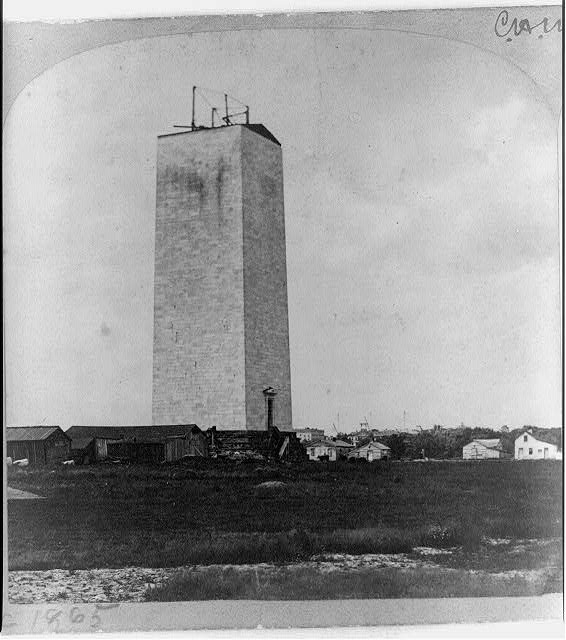
Continuing the brisk walk in the chilly morning, we head toward the Tidal Basin. The basin wasn’t created until the 1870s, but this is the location of the prime cherry blossoms, so of course we’re going to see them!
As I pause to get the right camera angle, the falling petals catch my attention. They make me think of Civil War springs here in the capital city. Spring’s flowers meant warmer weather, and signaled the start of the campaign and battle season. The cherry blossoms look a bit battered, the end of their season after all. But they remind me of the battered regiments facing another campaign season—comrades missing from the ranks, falling and not coming back.
Just breathe…watch the sun rise. Another dawn, another reveille, another day to try to make sense of it all.
Continuing to walk, we arrive at the Martin Luther King Jr. Memorial and have an opportunity to contemplate the legacy of the Civil War. A reminder that justice and freedom are an ongoing path. The Civil War led to the end of the institution of slavery in the United States, but the road to Civil Rights and equality has been been a continuing struggle. Walking Washington D.C. and thinking about Civil War history also means facing the legacies—good and difficult—of that defining conflict.
This quote reads: “Injustice anywhere is a threat to justice everywhere. We are caught in an inescapable network of mutuality, tied in a single garment of destiny. Whatever affects one directly, affects all indirectly.”
Layers and ties of history, too?
Crossing toward The Mall, we walk into the Korean War Memorial. The sunlight and flag offer a fine photography moment, but I’m struck by the thought that the flag is catching the light at this moment because the flag flies at half-staff. All the flags in D.C. fly low today, mourning the loss of children and teachers in Nashville. Great tasks still lie ahead of us.
The Lincoln Memorial dominates the monument landscape here, and we head west and up the flights of marble steps. Completed in 1922, the Lincoln Memorial in Washington D.C. is one of the most iconic tributes to the 16th President of the United States. Within the Lincoln Memorial, the Gettysburg Address is etched on the wall—a reminder of Lincoln’s efforts to give commitment and meaning to the losses and sacrifices of the Civil War.
Detailed photo of the ending of Lincoln’s Second Inaugural Address which is carved into one of the walls of the Lincoln Memorial in Washington D.C. Delivered in March 1865, this speech laid a vision for how the sixteenth president hoped to reunify and restore the nation after the battles of the Civil War.
I begin to pick up the walking pace as I leave the Lincoln Memorial. It’s time to head to work. Moving north, we pass the White House. This photograph was taken near the vicinity of 14th Street and E Street, looking toward The Mall, with the Smithsonian Castle visible in the background. Today, that area is at the east side of security gates of the White House and near the World War I Memorial (Pershing’s Plaza).
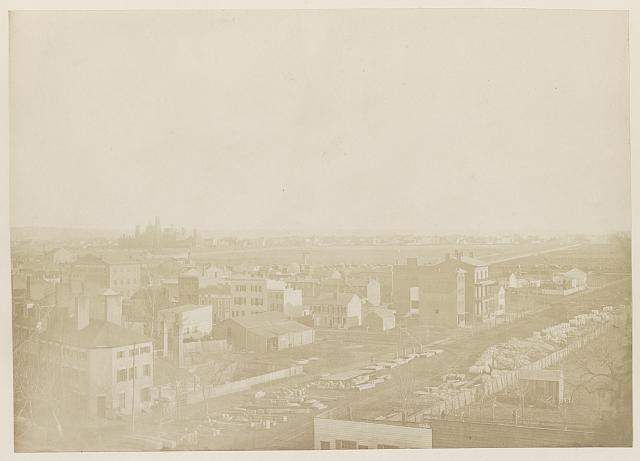
Crossing to go through Lafayette Square, I snap a quick photo of the northside of the White House. There’s a lot of activity this morning. Marine One has arrived, and Secret Service wait everywhere. As I continue through the Square, the sound of helicopter rotors intensifies, and I look back just in time to see the aircraft rising from the opposite side of the executive mansion. It’s the first time I’ve seen that in “real-life.”
In many ways, the White House has changed since Lincoln’s days. It is more symbolic. It certainly has higher security. Guards stand on the rooftop where the Lincoln boys once peered through their telescopes and prepared their cannons. But the White House is still a place of decisions.
Viewing the White House through the lens of Civil War history means recognizing this site as a command center. Here, Lincoln, the Cabinet, and the Generals met to discuss the course of the war. The effects of their discussions and decisions were carried out on the battlefields. That’s something I’ll want to think about again when I’m walking a battlefield…and not heading to work.

Watching the sunrise while strolling through the blossoms, monuments, and Civil War history in Washington D.C. offers time to pause and reflect. The Civil War was a defining moment in U.S. History, but the history of liberty did not stop there. Time and the quest for freedom “is marching on.”

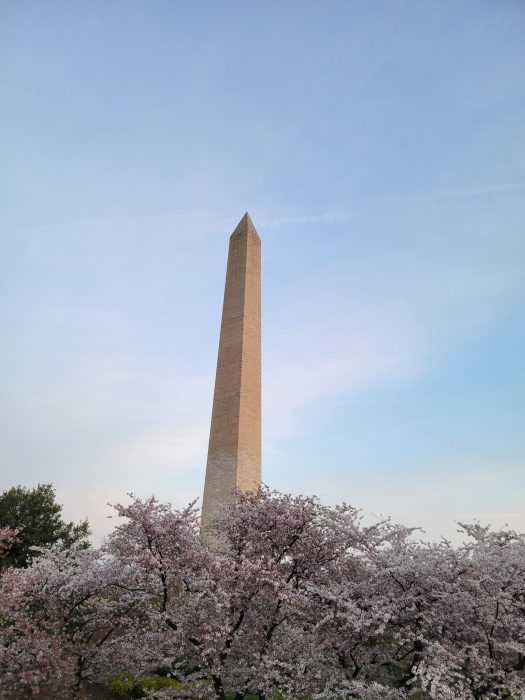
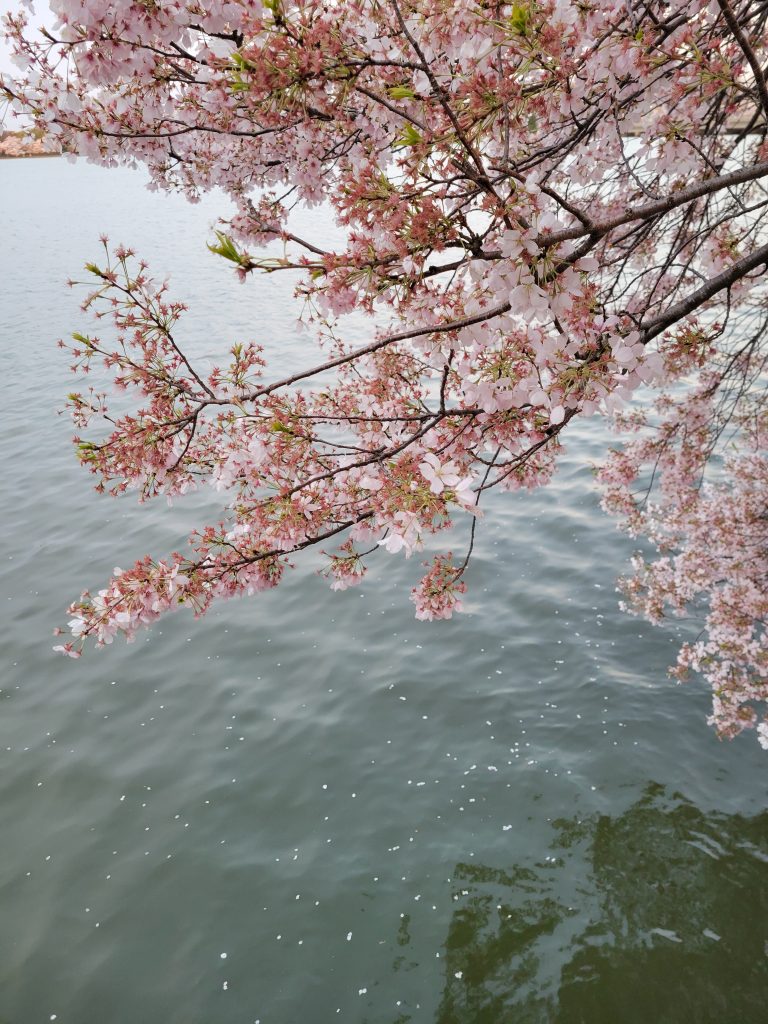
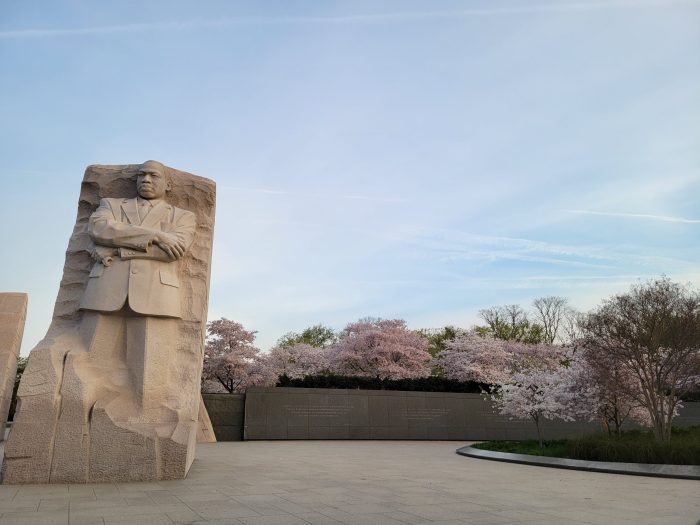


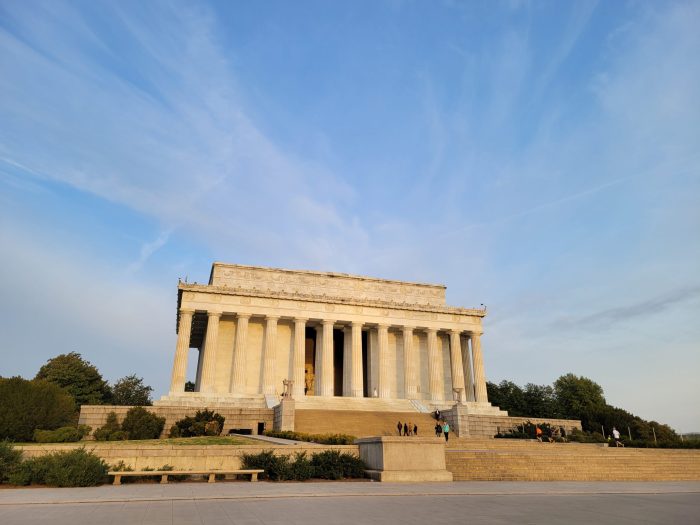
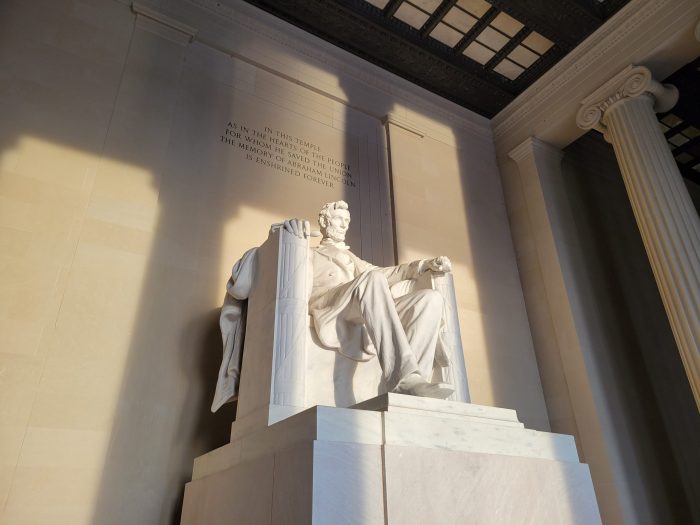




Defining moments, indeed. We as historians work to further those definitions. Beautiful work, my friend. Important work.
Thanks, Meg.
Very nice piece, Sarah.
Having been born in D.C., growing up in its suburb of Silver Spring, and now living in Ohio, seeing your photos of familiar landmarks really meant a lot to me.
I know your path was headed north after the picture of the Lincoln Memorial, and I know you of this, but facing west, right across the Potomac, is Lee’s Mansion surrounded by Arlington National Cemetery. Many Civil War veterans, including my g-g-grandfather, Capt. William W Burke, 22nd USCT, are buried there. Thank you for providing me with a rare, virtual visit to my hometown.
Happy to share the photos. Yes, Arlington is an emotionally moving place to walk. I’ll probably be heading there within a few weeks to find a few particular Civil War graves. Maybe there will be another “Photo Walk” for the ECW blog.
Thank you for sharing your photos and Washington walk with us, Sarah!
Thanks, Sarah, all great selections, particularly the moving, haunting Korean War Memorial.
Thanks for joining me for the virtual walk.